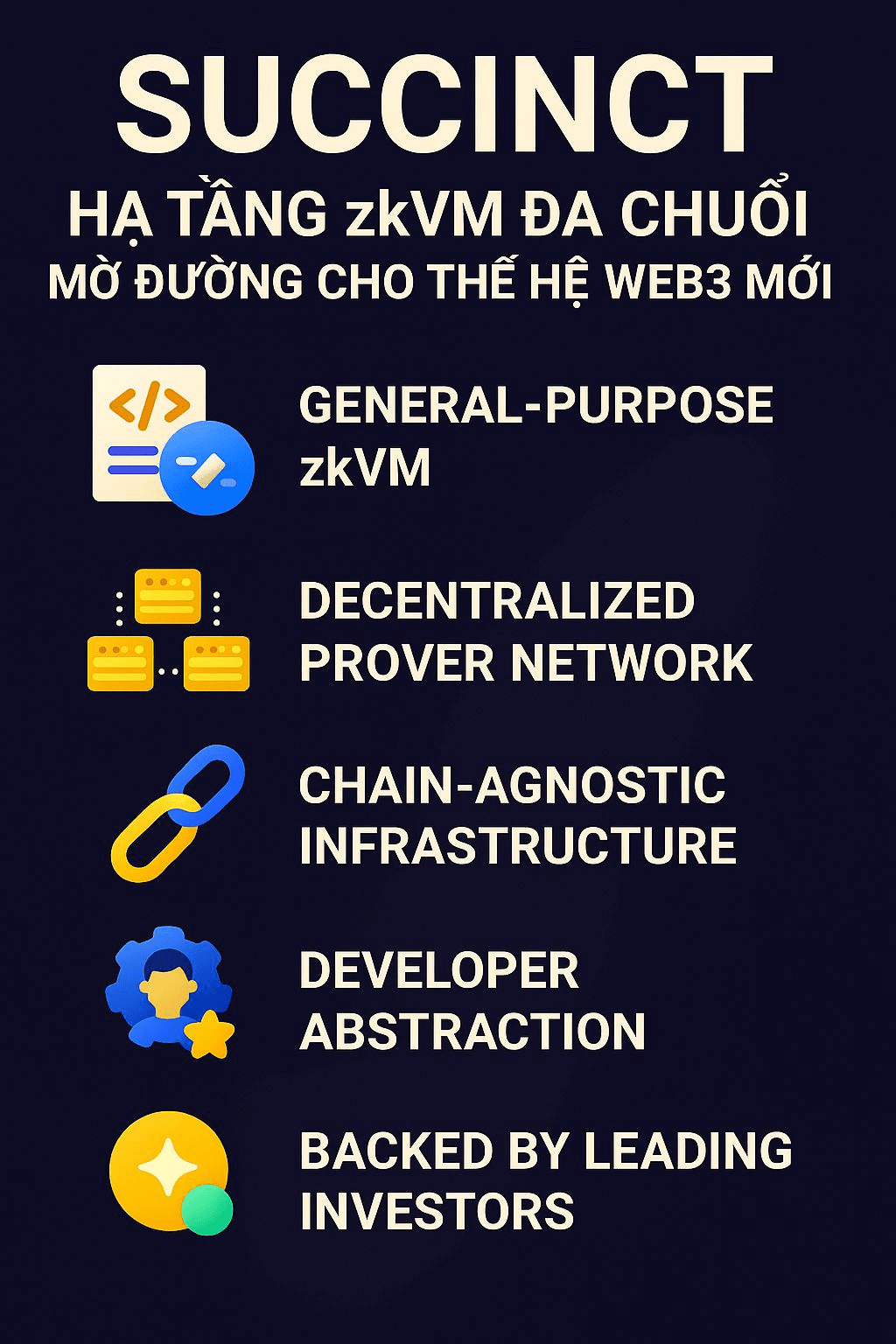Zero-knowledge (ZK) technology is gradually becoming the core foundation of Web3, providing unprecedented scalability, security, and interoperability. In this picture, Succinct emerges as a pioneering protocol, building a comprehensive zkVM infrastructure and a robust decentralized network to bring ZK into widespread practical applications.
Below are the technological pillars and strategic vision of Succinct:
1. General-Purpose zkVM – Multi-purpose ZK virtual machine for all applications
Succinct develops a modular zero-knowledge virtual machine (zkVM), capable of running WebAssembly (WASM) programs directly.
This design allows developers to easily bring existing applications to zkVM without needing to rewrite everything in a specialized language.
Thanks to its versatility, zkVM can serve various scenarios: from trustless bridging to rollup verification, to off-chain computation.
Supporting WASM programs also helps zkVM rapidly expand its ecosystem, as WASM has been adopted by many blockchain and Web2 projects.
2. Decentralized Prover Network – Decentralized ZK proof system
Succinct operates a permissionless prover network, where anyone can participate in generating zero-knowledge proofs.
The staking mechanism and rewards encourage provers to maintain stable and reliable performance.
This model promotes:
Scalability: The number of provers can increase according to computational demand.
Decentralization: Not dependent on a single entity.
Security: Proofs are cross-verified from multiple different provers, reducing the risk of fraud.
3. Chain-Agnostic Infrastructure – Flexible multi-chain infrastructure
Succinct is designed to be independent of a single blockchain, aiming for a multi-chain (chain-agnostic) environment.
This opens up many application cases:
Secure multi-chain bridge: Allows assets and data to move between blockchains without intermediaries.
Rollup verification: Enhancing reliability for L2 scaling solutions.
Interoperability: Facilitating seamless communication between dApps and services across different blockchains.
With this approach, Succinct becomes a layer of infrastructure that can integrate into any ecosystem within Web3.
4. Developer Abstraction – Simplifying the experience for developers
One of the major challenges of ZK is the complexity of cryptography.
Succinct addresses this by abstracting tools, meaning that developers do not need a deep understanding of ZK theory to build applications.
Friendly SDKs, APIs, and DevOps tools help teams easily integrate verifiable computation into their products.
This is particularly important to expand the developer community, bringing ZK out of the narrow scope of specialists and into the hands of startup teams, game studios, or DeFi protocols.
5. Backed by Leading Investors – Market confidence and the Web3 ecosystem
Succinct has received backing from many leading investment funds in the blockchain field.
This reflects the strong market confidence in the project's vision.
Not only does it have investment capital, but Succinct also establishes strategic partnerships with many major blockchain ecosystems, helping to rapidly expand the scope of practical deployment.
Having both financial resources and ecosystem connections makes Succinct an important piece in the global Web3 infrastructure.
6. Conclusion – The future of ZK and Succinct's position
Succinct is reshaping how blockchain applications adopt zero-knowledge proofs with an accessible, flexible, and globally scalable approach. With a comprehensive zkVM, decentralized prover network, multi-chain infrastructure, and simplified developer experience, this project is not just a technical platform but also a key to expanding secure and decentralized Web3.
In the future, as the demand for multi-chain interoperability and trustless security increases, Succinct could potentially become the common standard for zk infrastructure across the blockchain industry.
@Succinct #Succinctlabs $PROVE


